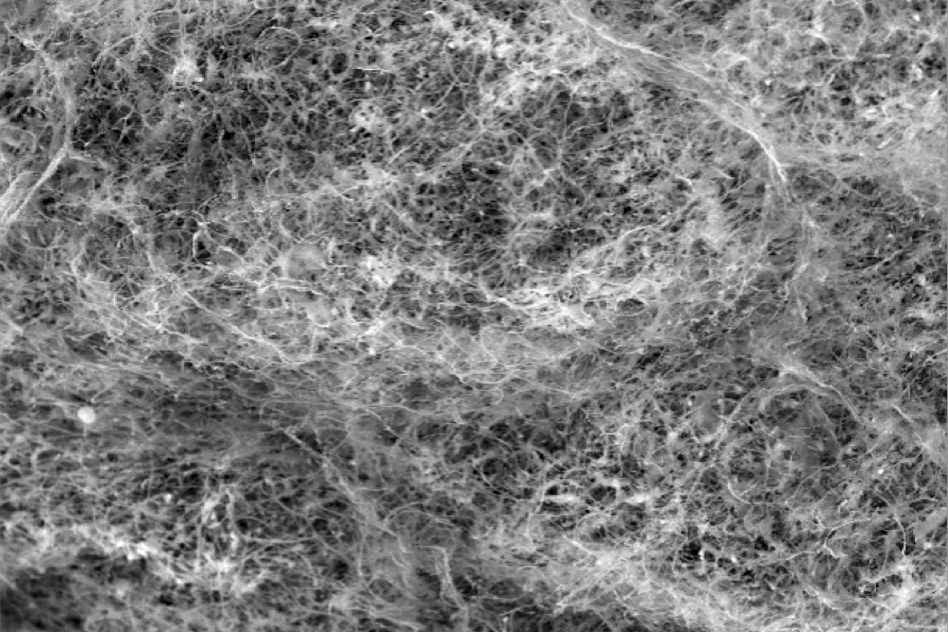Mucus not only serves as a lubricant and protective barrier, it also talks, sweetly. Its words are glycans, complex sugars that pacify potentially harmful bacteria. Although glycans have been called the underappreciated building blocks of life, they are anything but sweet nothings. They are signals that can instigate various biological processes, including processes that diminish virulence.
In mucus, glycans are often associated with mucins, proteins that help form gels. Together, mucins and glycans, or mucin-glycans, can regulate the behavior of bacteria, preventing them from communicating with each other and forming stubborn biofilms.
These findings emerged from a recent study completed by a team of scientists led by MIT’s Katharina Ribbeck, PhD, a professor of biological engineering. Detailed results appeared October 14 in the journal Nature Microbiology, in an article titled, “Mucin-glycans attenuate the virulence of Pseudomonas aeruginosa.”
“Using the bacterium Pseudomonas aeruginosa and a 3-dimensional (3D) laboratory model of native mucus, we determined that exposure to mucus triggers the downregulation of virulence genes involved in quorum sensing, siderophore biosynthesis, and toxin secretion, and rapidly disintegrates biofilms, a hallmark of mucosal infections,” the article’s authors indicated. “This phenotypic switch is triggered by mucins, polymers densely grafted with O-linked glycans that form the 3D scaffold inside mucus.”
Essentially, the mucin-glycans disarmed Pseudomonas aeruginosa, an opportunistic pathogen that can cause infections in cystic fibrosis patients and people with compromised immune systems. The mucin-glycans even dispersed bacterial cells that had already formed biofilms.
“By isolating glycans from the mucin backbone, we assessed the collective activity of hundreds of complex structures in solution,” the authors continued. “Like their grafted counterparts, free mucin-glycans potently regulate bacterial phenotypes even at relatively low concentrations. This regulatory function likely depends on glycan complexity, as monosaccharides do not attenuate virulence.”
As the quoted passages indicate, the investigators focused on a single microbe while assessing collections of hundreds of glycans. In current work, the investigators are evaluating how mucin-glycans can regulate the behavior of other microbes. Going forward, the investigators plan to study the effects of individual glycans, which may interact specifically with different pathways or different microbes.
Although much about mucin-glycans remains to be explored, the investigators are confident that they are taming microbes, not killing them. Some of the evidence in support of this view comes from experiments in which mucin-glycans were introduced to P. aeruginosa-infected porcine burn wounds. Mucin-glycan treatments reduced CFU counts, but mucin-free mock treatments didn’t.
“The sustained clearance of P. aeruginosa detected here is likely not due to direct killing, as viability was not inhibited by mucins in isolation,” the article’s authors noted. “Rather, mucin likely mediates bacterial clearance through regulation of microbial phenotypes, which attenuates pathogens and thereby facilitates host-mediated clearance.”
Mucus applications, such as those relying on artificial mucus, could complement traditional antibiotics by ensuring that microbes are pacified, not killed. Such applications would help limit selective pressure for developing resistance. That is, mucin-glycans would not pressure microbes to find ways to survive.
“What we have in mucus is a therapeutic gold mine,” said Ribbeck. “These glycans have biological functions that are very broad and sophisticated. They have the ability to regulate how microbes behave and really tune their identity.”
Another potential benefit of therapeutic mucin-glycans is that could be used without diminishing microbiome diversity. In fact, Ribbeck suspects that glycans in mucus play a key role in determining the composition of the microbiome—the trillions of bacterial cells that live inside the human body.
Mucus-associated glycans may assist beneficial microbes, providing nutrients, for example. These glycans might have functions like those performed by the many oligosaccharides found in human milk, which also contains a wide array of sugars that can regulate microbe behavior.
“Identification of specific bioactive glycans,” the authors of the Nature Microbiology article concluded, “will likely reveal a class of therapeutics for treating intractable bacterial infections and may inspire treatment strategies that tune host glycan signals to attenuate microbial virulence and stabilize the healthy microbiota.”
“This is a theme,” Ribbeck suggested, “that is likely at play in many systems where the goal is to shape and manipulate communities inside the body, not just in humans but throughout the animal kingdom.”


